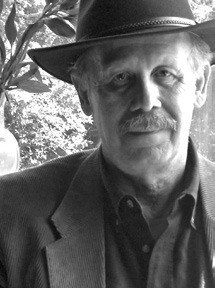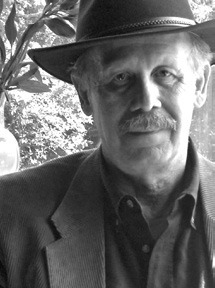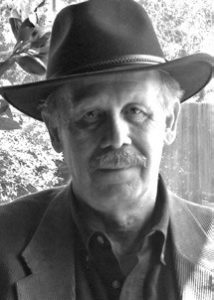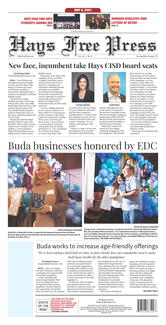By Bartee Halie
 Cal Farley
Cal Farley
Cal Farley’s huge heart suddenly gave out on Feb. 19, 1967, while the founder of Boys Ranch attended chapel with his “cowboys.”
The homespun humanitarian knew all about broken homes. Cal was just a boy himself, when his father walked out on his wife and six children. He had no choice but to quit school after the eighth grade to help with the chores on the family farm in Minnesota.
Cal’s ticket out was his aptitude for athletics. Jumping at the chan...
By Bartee Halie
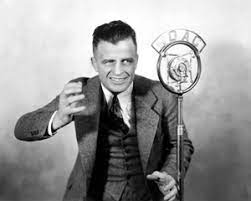 Cal Farley
Cal Farley
Cal Farley’s huge heart suddenly gave out on Feb. 19, 1967, while the founder of Boys Ranch attended chapel with his “cowboys.”
The homespun humanitarian knew all about broken homes. Cal was just a boy himself, when his father walked out on his wife and six children. He had no choice but to quit school after the eighth grade to help with the chores on the family farm in Minnesota.
Cal’s ticket out was his aptitude for athletics. Jumping at the chance to play semi-pro baseball for $15 a week, the teenager left his unhappy home and never looked back.
Six years later, Cal joined the doughboy crusade to make the Old World “safe for democracy.” He passed the time after the armistice by winning the welterweight wrestling championship of the American Expeditionary Forces and the Inter-Allied crown in a match against the Australian titleholder.
Cal rolled into Amarillo in 1923 as the second baseman for the local minor-league team. To pick up a few extra bucks between games, he wrestled anybody rash enough to accept his advertised challenge “to stand the biggest man in town on his ear.”
With a wife and a daughter, named after close friend Gene Tunney, to support, Cal retired from the diamond and the ring. By the early 1930’s, he had become a successful businessman and popular radio personality with his own daily show.
Meanwhile, the deepening Depression was tearing many families apart and turning unsupervised youngsters loose on society. Cal’s answer to the juvenile crime wave gripping Amarillo was a sports program to keep the kids off the street and out of trouble.
With the help of like-minded merchants and a building donated by rancher Julian Bivins, Cal opened the Maverick Club in January 1934. The response was overwhelming with 1,400 active participants in the first 12 months.
The privately funded program was not all fun and games. Needy members were given free clothes, shoes, haircuts and medical attention. When it came to taking care of his boys, Cal could talk the birds out of the trees.
The Maverick Club took an immediate and meaningful bite out of underaged crime. The number of adolescent offenders shipped from Amarillo to the state reformatory dropped from 18 in 1933 to only two in ’34.
Rather than rest on his laurels, Cal turned his attention to the one boy in ten who needed much more than the Maverick Club could provide. “We can’t reach those boys at the bottom of the barrel unless we can provide a home for them,” he told rancher Bivins. “Not just some place to spend their afternoons, but somewhere where they will get 24-hour care and discipline, where they can get the ‘raising’ they missed in their own homes.”
Julian Bivins had just the place – the wide-open spaces at the Old Tascosa townsite 40 miles outside of Amarillo. Cal accepted the generous offer, convinced the caretaker and his wife to stick around until permanent staff could be hired and started looking for his initial batch of boarders.
The Maverick Club referred Cal to a 12-year-old truant whose infrequent attendance invariably ended in a fight. Cal had to bite his tongue as the mother rambled on about how stupid, vicious and out of control her son was. When the woman finally paused for breath, he asked, “Will you turn him over to us to raise?”
“Sure,” she flippantly replied. “I’m leaving town myself.”
“When?” Cal inquired drily implying that it could not be soon enough.
“There’s a bus at two this afternoon.”
“I wish you’d get out of here right now,” he snapped, “and leave me this boy.”
That neglected child and four others moved to the ranch in March 1939. Nine more, along with a superintendent and a cook, arrived in time to celebrate the first Christmas.
Cal sold his business in 1947 and devoted his last 20 years to Boys Ranch. His Panhandle pardners could not have had a better or more effective spokesman.
When a reporter from the Saturday Evening Post toured the unique spread in 1962, 300 boys from 32 states lived 36 to a dorm under the watchful eyes of a live-in couple. Fourteen hundred had come and gone in nearly a quarter century, and fewer than 50 had washed out.
Cal Farley gladly shared the secret of the Boys Ranch success with the visiting journalist. “In the first place, we give these kids some affection, make them feel they have a place in the world and are wanted. We can be tough when we have to be, but I won’t stand for brutality.
“Second, the steady boys at the ranch help us show the wild ones how to conduct themselves. The older ones who have earned it are appointed junior leaders, and I never cease to be amazed at how much they can help in turning an undisciplined animal around in his tracks and making a decent kid out of him.”
“Murder Most Texan” is a must read for fans of true crime and Texas history. Order your copy for $24.00 by mailing a check to Bartee Haile, P.O. Box 130011, Spring, TX 77393.




